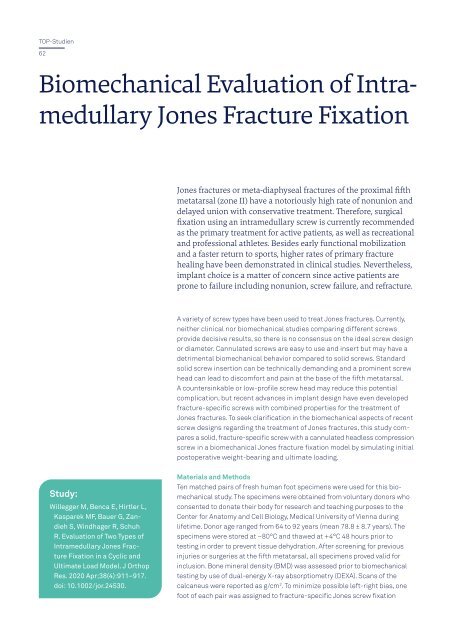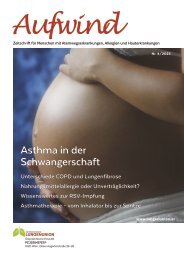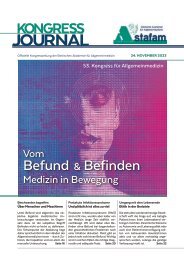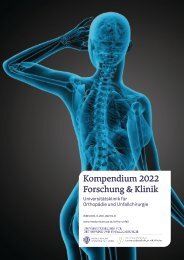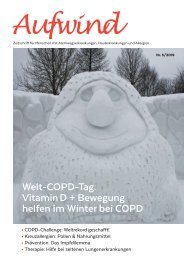Kompendium 2020 Forschung & Klinik
Das Kompendium 2020 der Universitätsklinik für Orthopädie und Unfallchirurgie von MedUni Wien und AKH Wien (o. Univ.-Prof. R. Windhager) stellt einen umfassenden Überblick über die medizinsichen Leistungen und auch die umfangreichen Forschungsfelder dar. Die Veröffentlichungen zeigen die klinische Relevanz und innovative Ansätze der einzelnen Forschungsrichtungen. Herausgeber: Universitätsklinik für Orthopädie und Unfallchirurgie MedUni Wien und AKH Wien Prof. Dr. R. Windhager ISBN 978-3-200-07715-7
Das Kompendium 2020 der Universitätsklinik für Orthopädie und Unfallchirurgie von MedUni Wien und AKH Wien (o. Univ.-Prof. R. Windhager) stellt einen umfassenden Überblick über die medizinsichen Leistungen und auch die umfangreichen Forschungsfelder dar. Die Veröffentlichungen zeigen die klinische Relevanz und innovative Ansätze der einzelnen Forschungsrichtungen.
Herausgeber: Universitätsklinik für Orthopädie und Unfallchirurgie
MedUni Wien und AKH Wien
Prof. Dr. R. Windhager
ISBN 978-3-200-07715-7
Create successful ePaper yourself
Turn your PDF publications into a flip-book with our unique Google optimized e-Paper software.
TOP-Studien<br />
62<br />
Biomechanical Evaluation of Intramedullary<br />
Jones Fracture Fixation<br />
Jones fractures or meta-diaphyseal fractures of the proximal fifth<br />
metatarsal (zone II) have a notoriously high rate of nonunion and<br />
delayed union with conservative treatment. Therefore, surgical<br />
fixation using an intramedullary screw is currently recommended<br />
as the primary treatment for active patients, as well as recreational<br />
and professional athletes. Besides early functional mobilization<br />
and a faster return to sports, higher rates of primary fracture<br />
healing have been demonstrated in clinical studies. Nevertheless,<br />
implant choice is a matter of concern since active patients are<br />
prone to failure including nonunion, screw failure, and refracture.<br />
A variety of screw types have been used to treat Jones fractures. Currently,<br />
neither clinical nor biomechanical studies comparing different screws<br />
provide decisive results, so there is no consensus on the ideal screw design<br />
or diameter. Cannulated screws are easy to use and insert but may have a<br />
detrimental biomechanical behavior compared to solid screws. Standard<br />
solid screw insertion can be technically demanding and a prominent screw<br />
head can lead to discomfort and pain at the base of the fifth metatarsal.<br />
A countersinkable or low-profile screw head may reduce this potential<br />
complication, but recent advances in implant design have even developed<br />
fracture-specific screws with combined properties for the treatment of<br />
Jones fractures. To seek clarification in the biomechanical aspects of recent<br />
screw designs regarding the treatment of Jones fractures, this study compares<br />
a solid, fracture-specific screw with a cannulated headless compression<br />
screw in a biomechanical Jones fracture fixation model by simulating initial<br />
postoperative weight-bearing and ultimate loading.<br />
Study:<br />
Willegger M, Benca E, Hirtler L,<br />
Kasparek MF, Bauer G, Zandieh<br />
S, Windhager R, Schuh<br />
R. Evaluation of Two Types of<br />
Intramedullary Jones Fracture<br />
Fixation in a Cyclic and<br />
Ultimate Load Model. J Orthop<br />
Res. <strong>2020</strong> Apr;38(4):911–917.<br />
doi: 10.1002/jor.24530.<br />
Materials and Methods<br />
Ten matched pairs of fresh human foot specimens were used for this biomechanical<br />
study. The specimens were obtained from voluntary donors who<br />
consented to donate their body for research and teaching purposes to the<br />
Center for Anatomy and Cell Biology, Medical University of Vienna during<br />
lifetime. Donor age ranged from 64 to 92 years (mean 78.8 ± 8.7 years). The<br />
specimens were stored at –80°C and thawed at +4°C 48 hours prior to<br />
testing in order to prevent tissue dehydration. After screening for previous<br />
injuries or surgeries at the fifth metatarsal, all specimens proved valid for<br />
inclusion. Bone mineral density (BMD) was assessed prior to biomechanical<br />
testing by use of dual-energy X-ray absorptiometry (DEXA). Scans of the<br />
calcaneus were reported as g/cm 2 . To minimize possible left-right bias, one<br />
foot of each pair was assigned to fracture-specific Jones screw fixation


